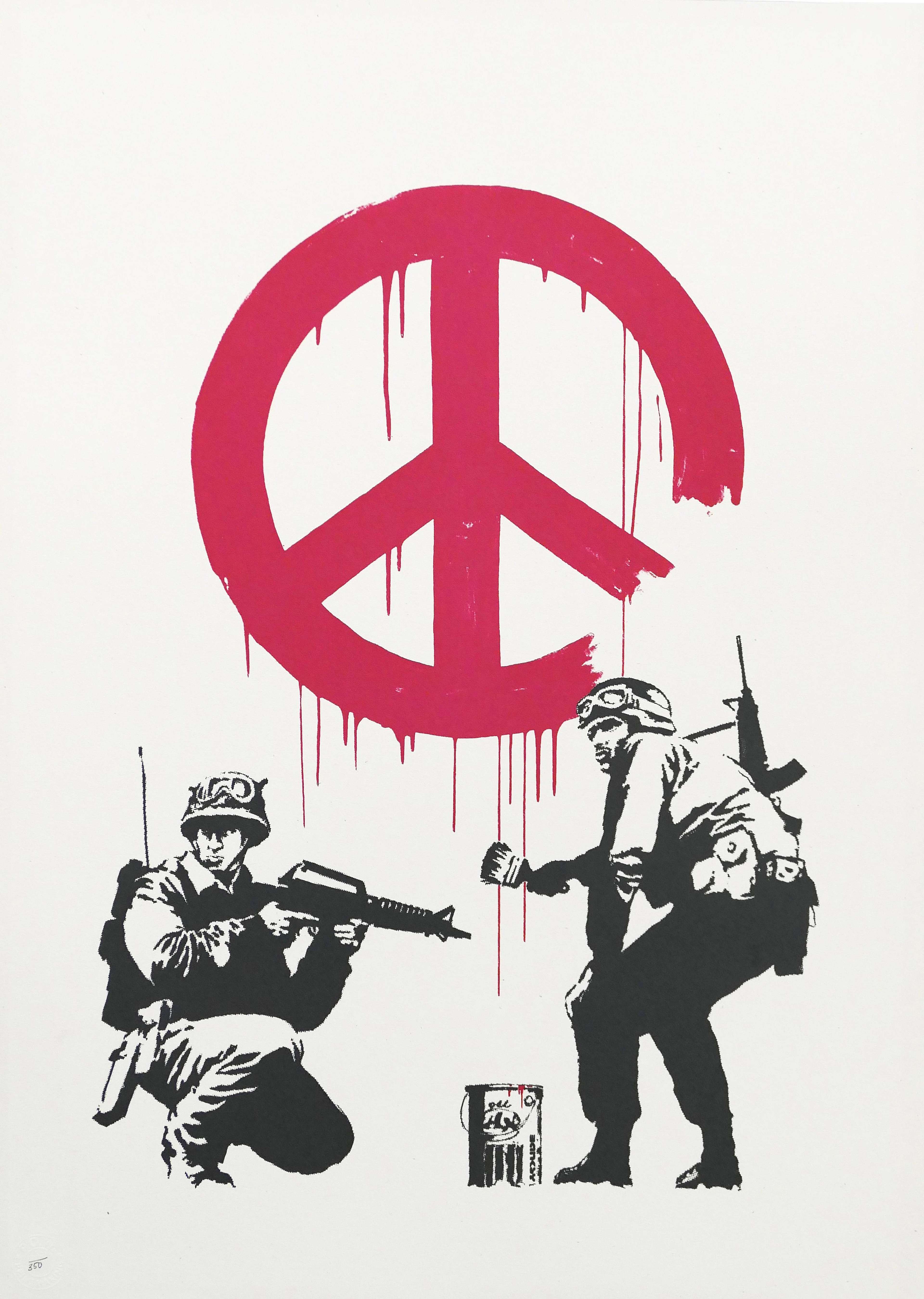 CND Soldiers © Banksy 2005
CND Soldiers © Banksy 2005
Banksy
269 works
First seen on the houses of Parliament and now recognised as one of the artist's most prominent anti-war artworks, CND Soldiers is one of the most sought-after Banksy prints.
To learn more about the work and its legacy, see our 10 facts here:
Banksy’s CND Soldiers first appeared in 2003
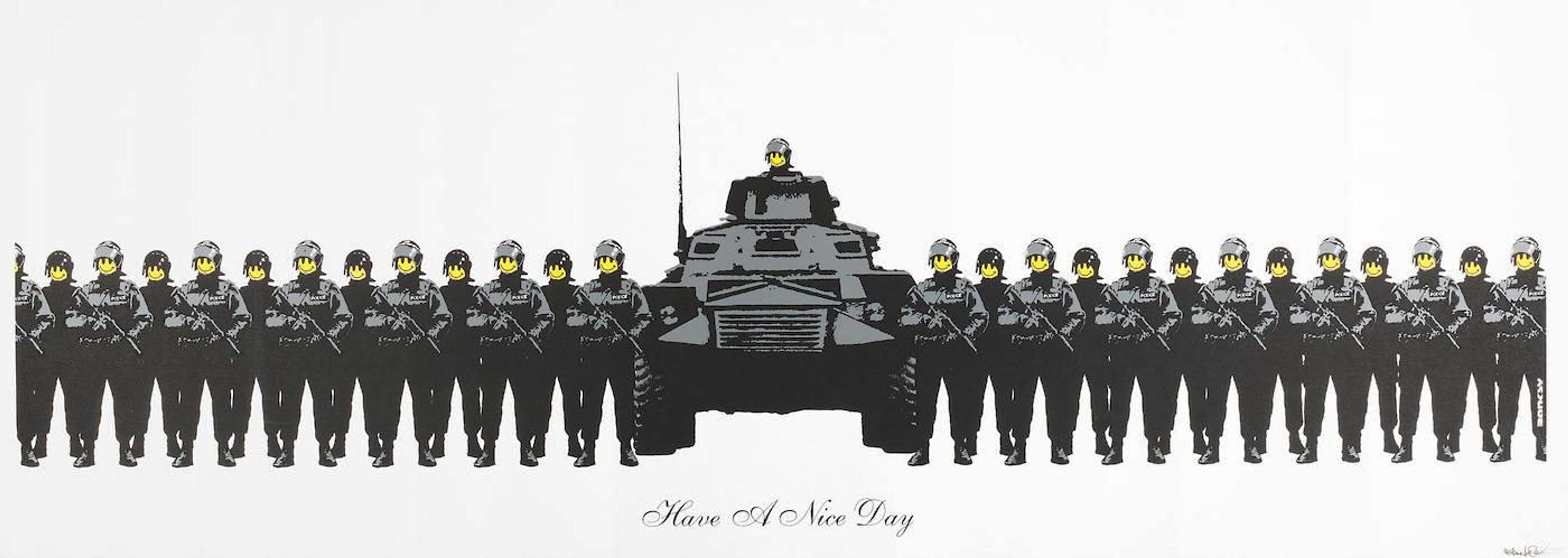 Have A Nice Day (Anarchist Book Fair) © Bansky 2003
Have A Nice Day (Anarchist Book Fair) © Bansky 2003The mural was painted on a wall close to the Houses of Parliament in London. Nearby, a peaceful protest was taking place, led by campaigner Brian Haw. Haw had camped in Parliament Square since 2001 to oppose the UK and US foreign policy regarding Iraq.
Although Banksy’s CND Soldiers was later removed by the authorities, Haw would stay at Parliament Square for a total of ten years.
When was CND Soldiers released as a print?
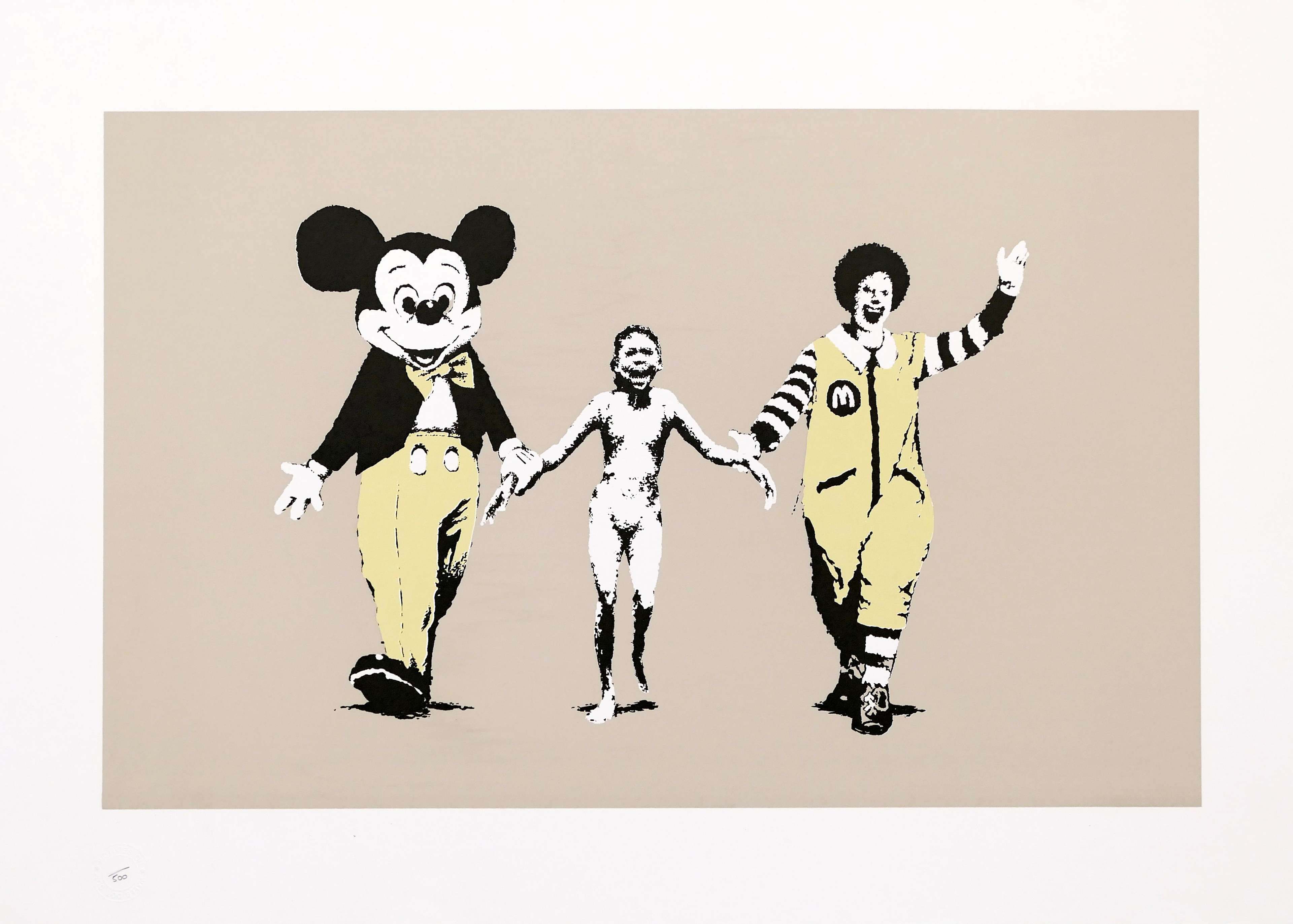 Napalm © Banksy 2004
Napalm © Banksy 2004CND Soldiers was released as editioned screenprints, on wove paper measuring 70cm x 50cm, in 2005, two years after Banksy’s original mural. There are 350 signed and 350 unsigned editions.
The artwork is a surprising message for peace
 CND Soldiers © Banksy 2005
CND Soldiers © Banksy 2005CND Soldiers shows two armed and uniformed soldiers graffitiing a wall. One stands guard with a machine gun while the other is poised with a paintbrush and a can of paint at his feet. In contrast to the threatening authority of the soldiers, behind them is a large, almost complete, peace sign in wet red paint.
What is the meaning behind Banksy's CND Soldiers?
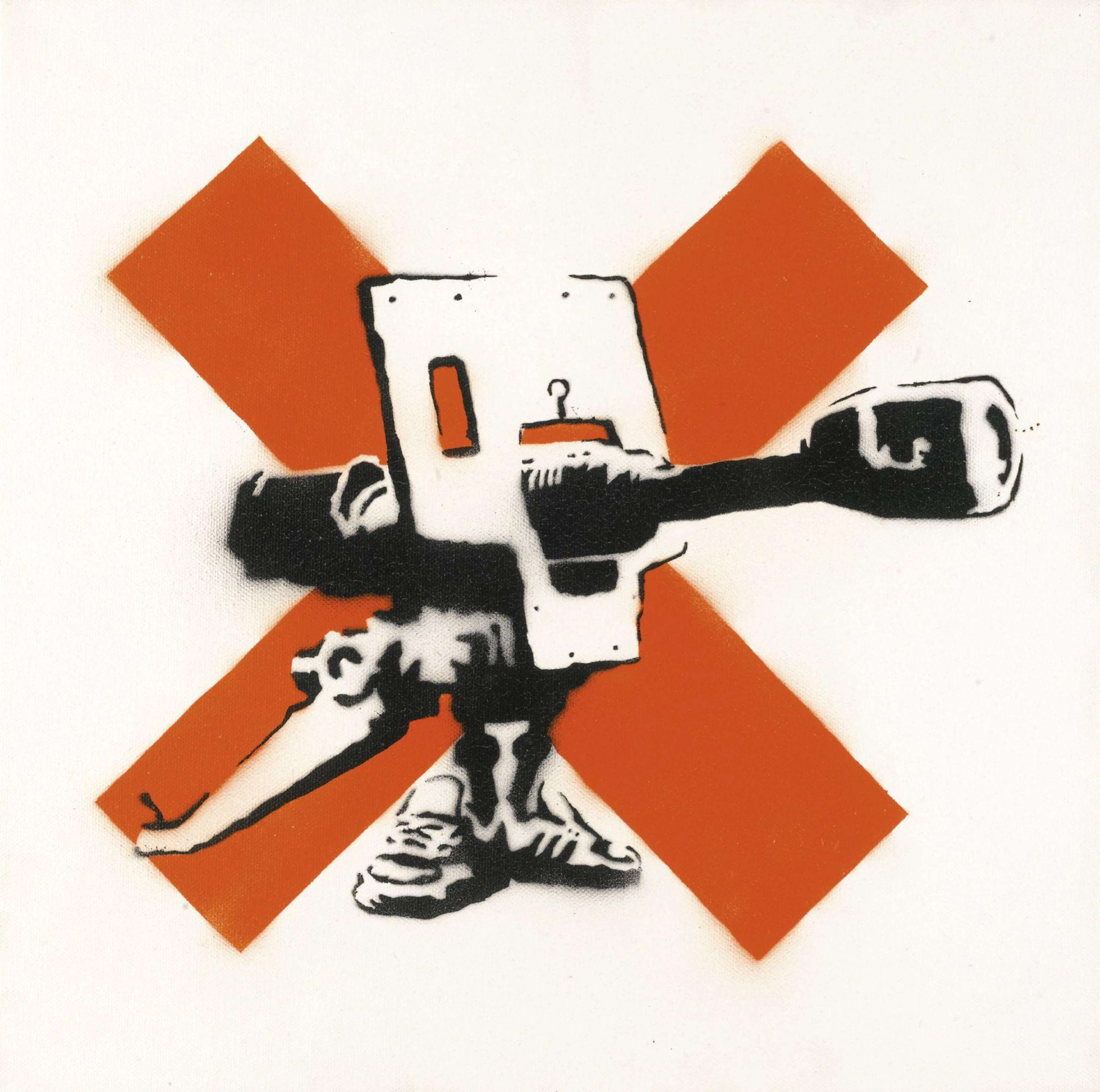 Bad Meaning Good © Banksy 2002
Bad Meaning Good © Banksy 2002Banksy’s CND Soldiers promotes a message against violence and conflict – here, the soldiers are anti-war activists. In 2003, millions of people, including from the armed forces, protested against the UK’s invasion of Iraq. In Banksy’s artwork, the idea of soldiers ‘keeping the peace’ meant going against the government’s actions.
What does ‘CND’ stand for?
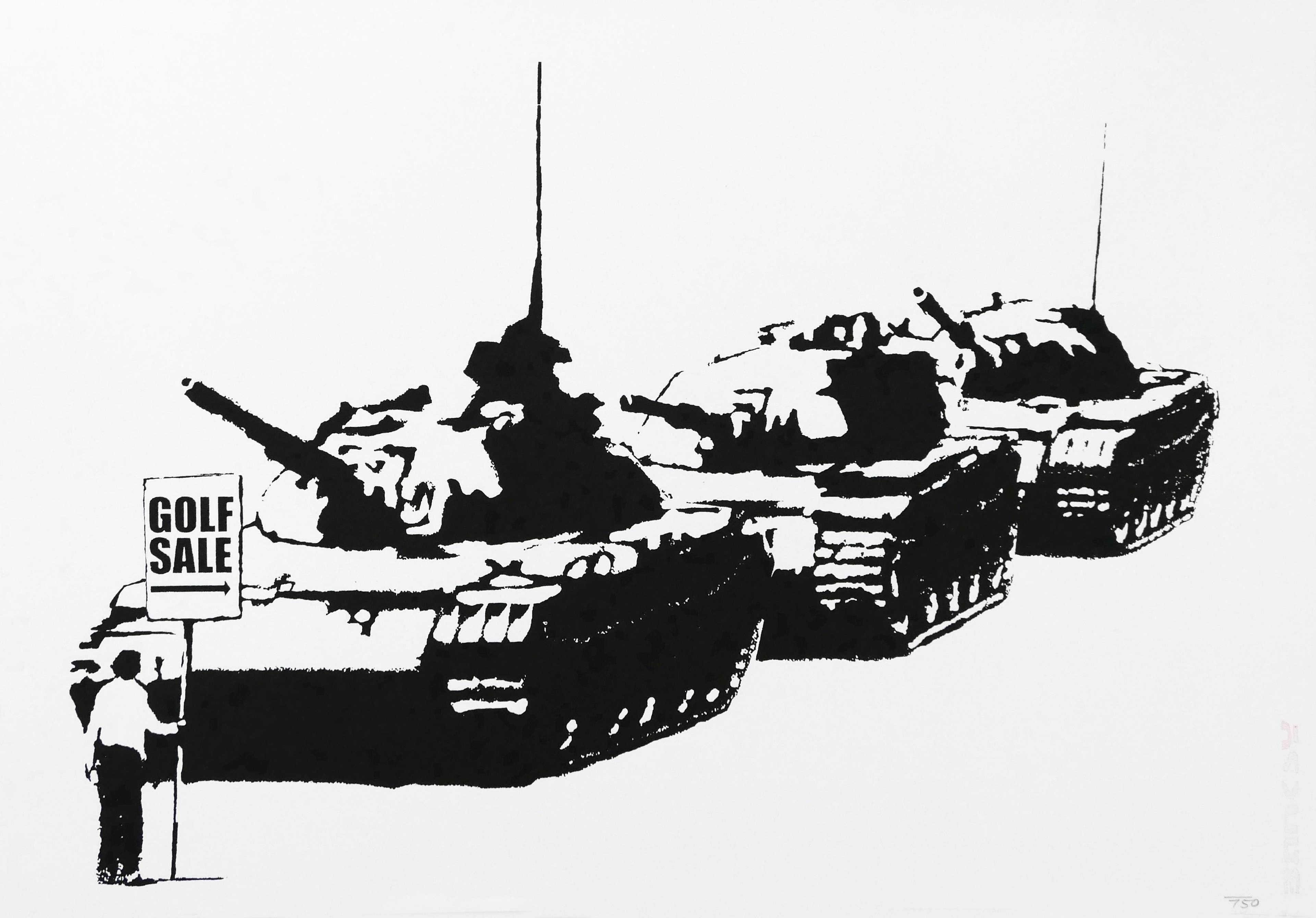 Golf Sale © Banksy 2003
Golf Sale © Banksy 2003The title ‘CND’ stands for ‘Campaign for Nuclear Disarmament’ – its logo was originally used as a symbol against nuclear weapons, but it is now also widely recognised as a symbol of peace.
The full history of the symbol can be found here.
Banksy gave peace advocate, Brian Haw, a CND Soldiers placard...
 Placard Rat (Welcome to Hell) © Banksy 2004
Placard Rat (Welcome to Hell) © Banksy 2004...and celebrity illusionist Uri Geller offered to buy it!
Brian Haw was a well-known protestor who staged a live-in protest against British military involvement in Iraq for nearly a decade, in London's Parliament Square, near to where Banksy painted his original CND Soldiers wall mural. According to the Independent in 2007, the famous magician was passing, and was immediately taken with the artwork. “I’m very much against weapons,” Geller said to the newspaper. “So when I drove past Brian and saw the painting I pulled over and ran across the lawn and asked if I could buy it. I think I offered £5,000.”
Haw remembered the event differently: “Uri said he wanted this painting even when I said it wasn’t for sale. He offered £1,000. He was very peeved.”
Police took the CND Soldiers placard in a raid on Haw's camp
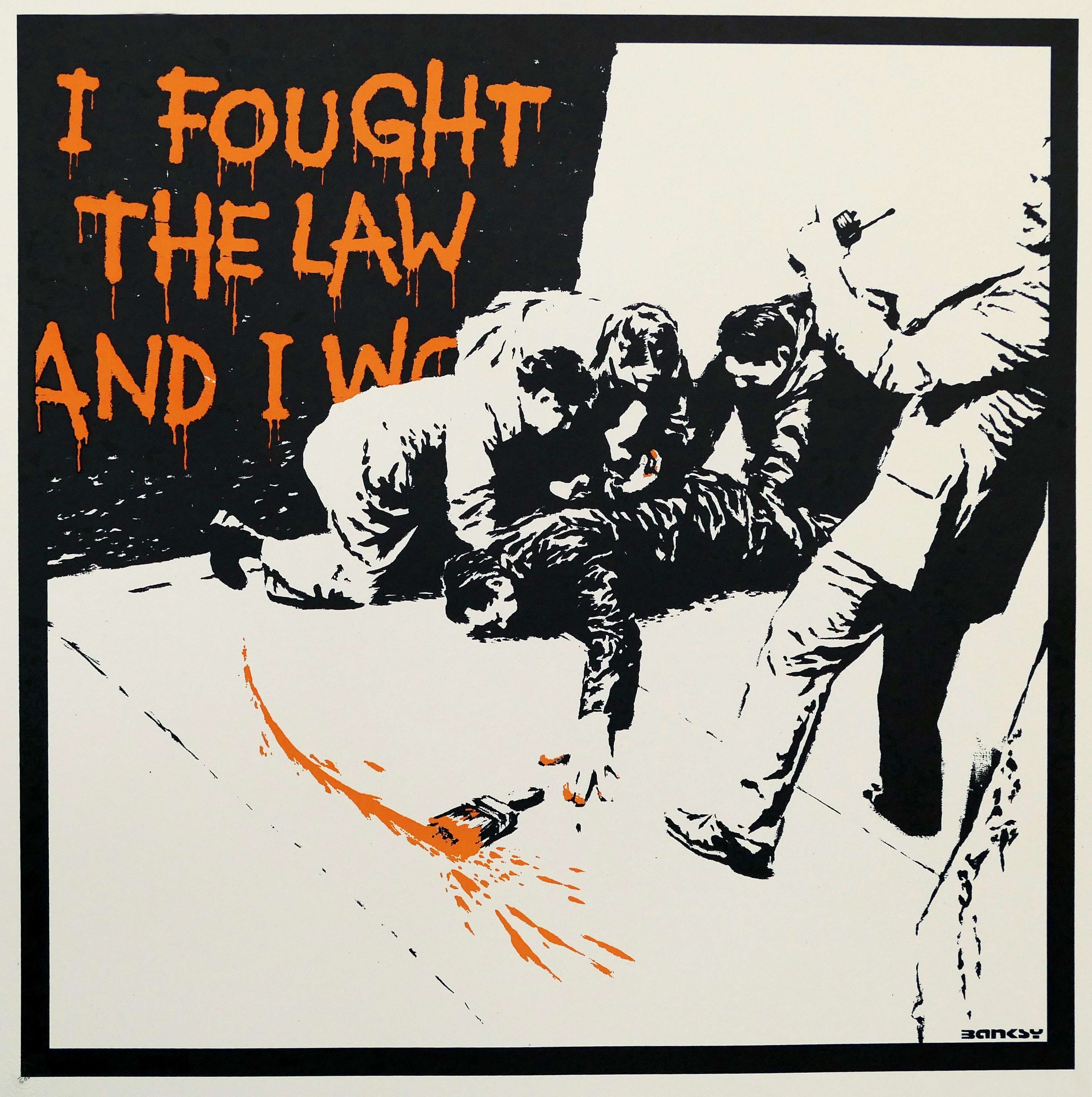 I Fought the Law © Banksy 2004
I Fought the Law © Banksy 2004Soon after the event with Geller, dozens of police officers descended on Haw’s camp in the middle of the night and removed 40 metres of placards, including the one by Banksy.
But afterwards, Banksy “sent his colleague Marcus recently to say he is happy to do one showing a noose, a pink noose in the shape of a heart. I’d like that,” Haw told the Independent. The newspaper did not report if one was made, or where it might be now.
CND Soldiers was later featured in Turner Prize-winning artwork
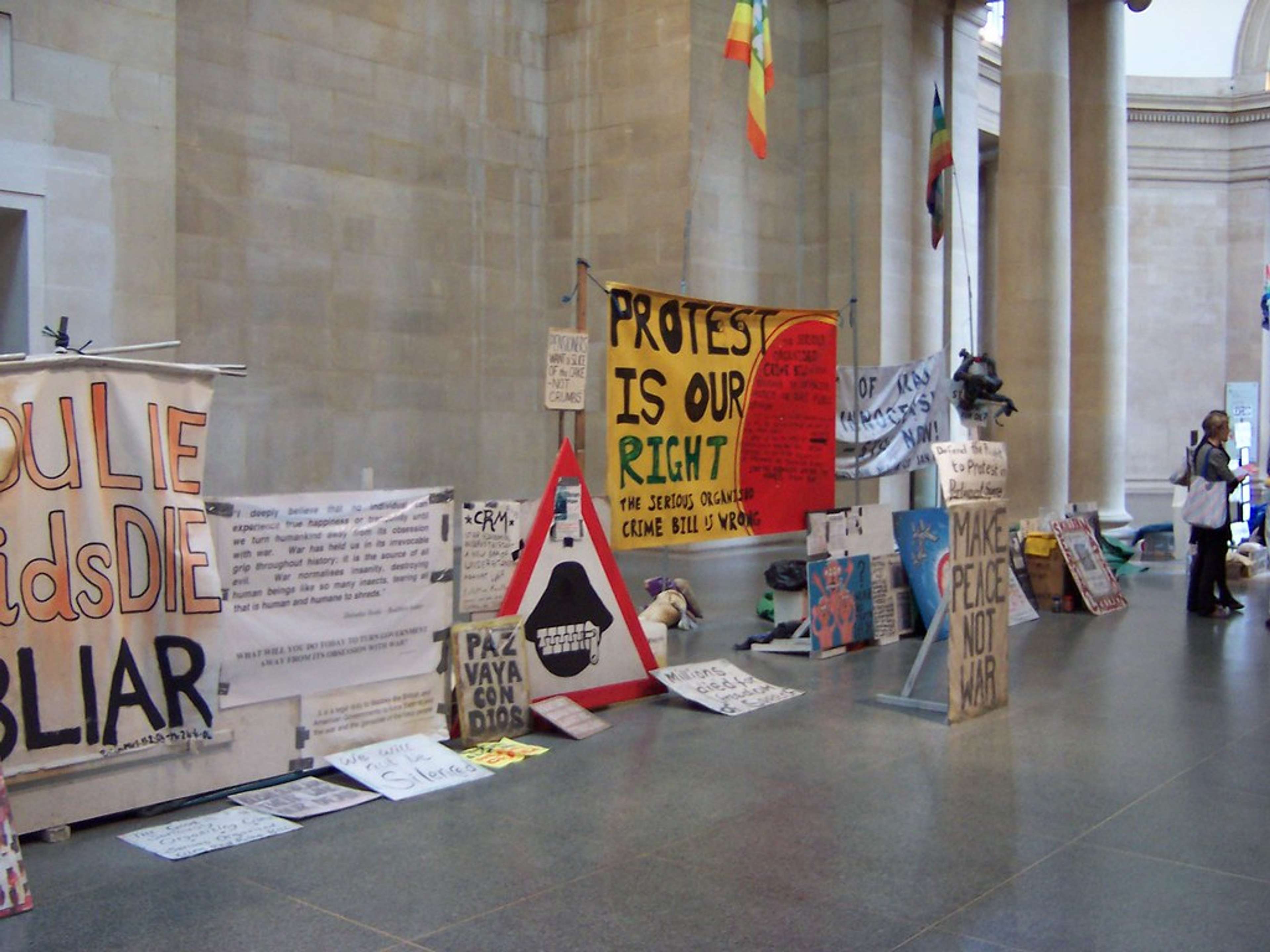 Image © Loz Flowers via Flickr, CC BY-SA 2.0 / State Britain © Mark Wallinger 2007
Image © Loz Flowers via Flickr, CC BY-SA 2.0 / State Britain © Mark Wallinger 2007In 2007, the whole of Haw’s protest camp – including Banksy’s CND Soldiers – was recreated as a part of artist Mark Wallinger’s installation State Britain at Tate.
Wallinger won the Turner Prize later that year. His installation was praised as “a bold political statement with art’s ability to articulate fundamental human truths” – arguably a statement that could be applied to the work of Banksy or Haw too.
What is the highest price paid for Banksy's CND Soldiers?
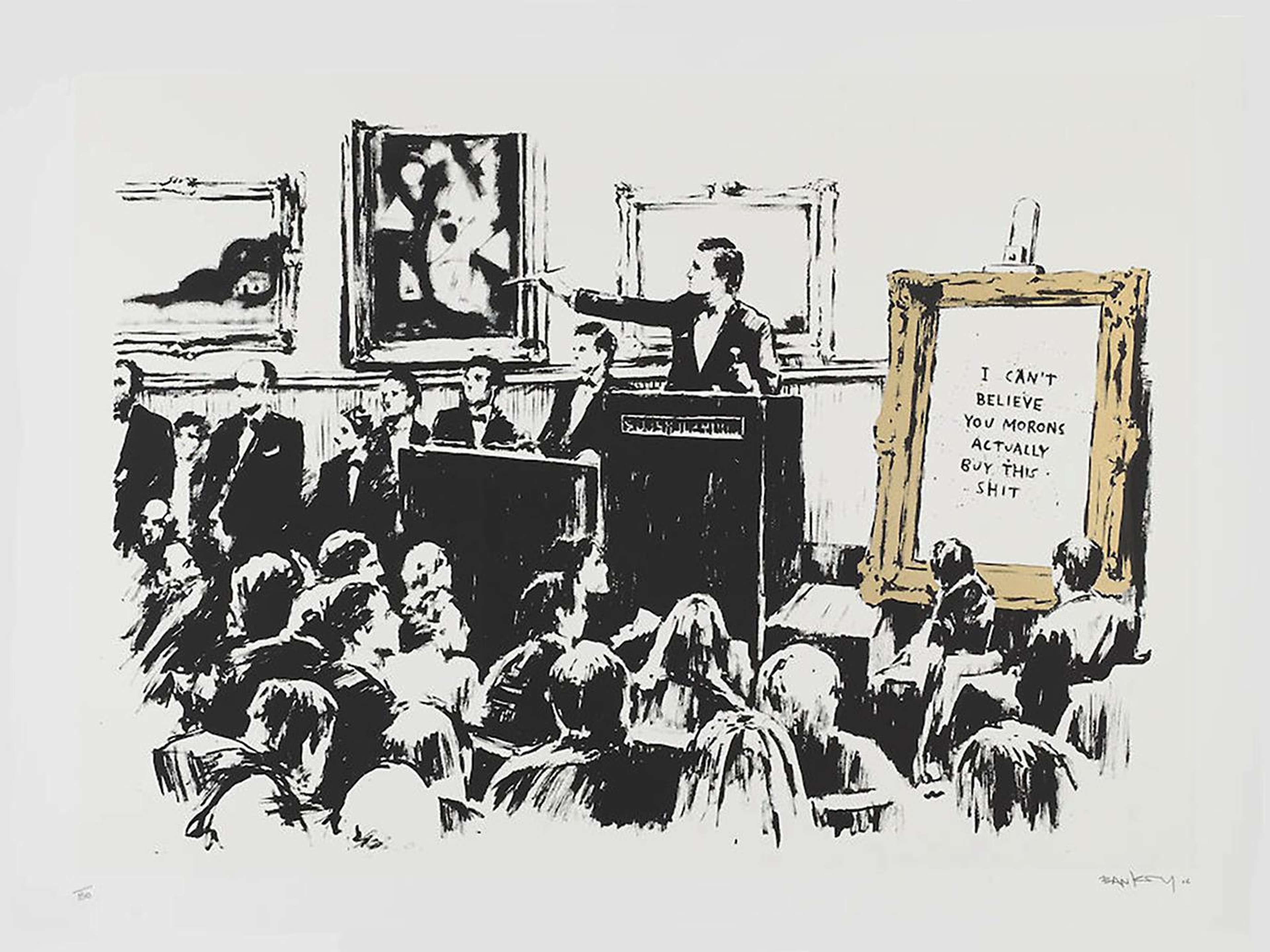 Morons (LA Edition, White) © Banksy 2007
Morons (LA Edition, White) © Banksy 2007The top price paid for a signed CND Soldiers print is £93,600, from a London sale in December 2020. An unsigned print achieved JP¥7.8 million (£57,722) at an auction in Tokyo in October 2020.
Banksy often contrasts ideas of peace and violence
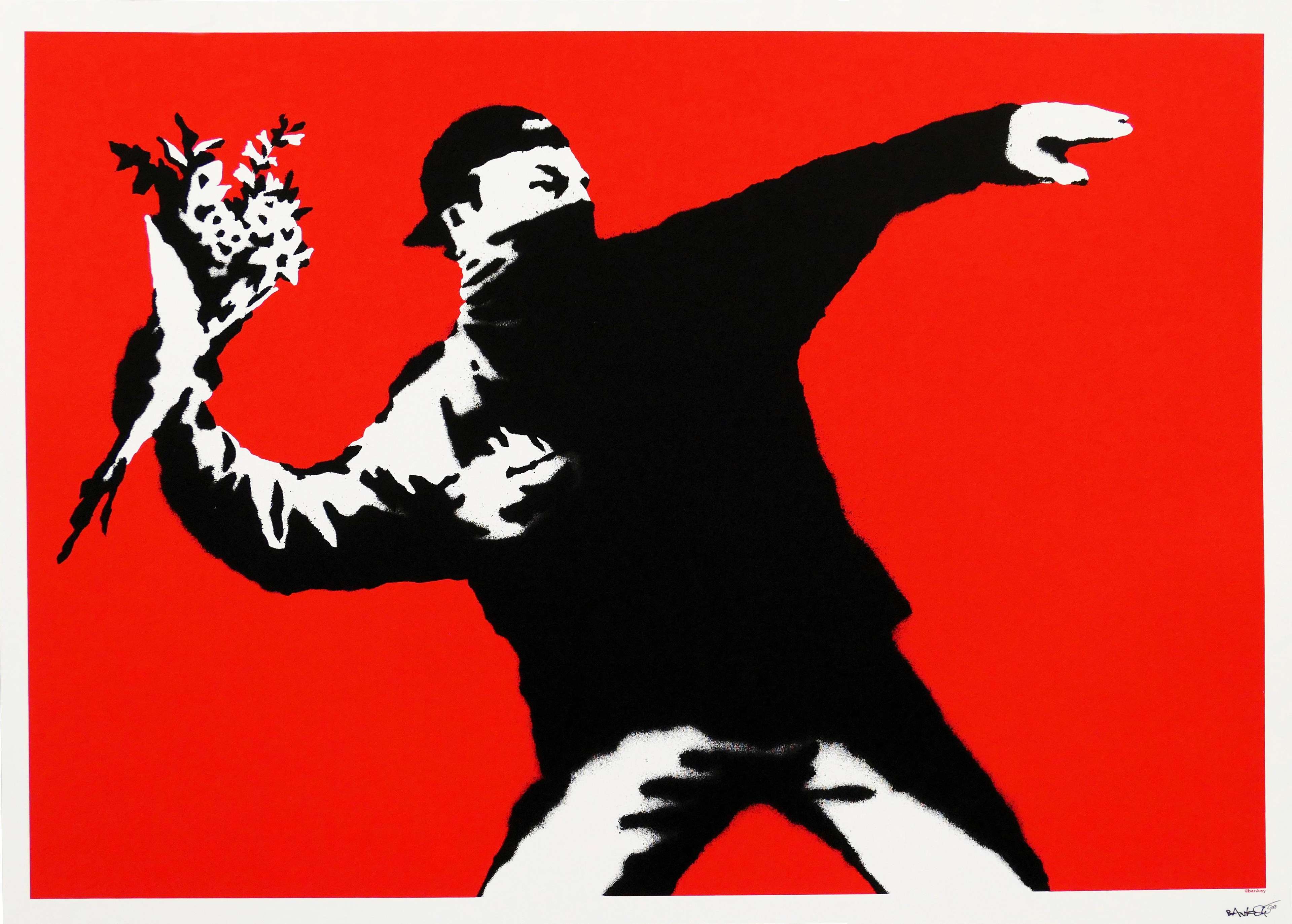 Love Is In The Air (flower thrower) © Banksy 2003
Love Is In The Air (flower thrower) © Banksy 2003The visual contrast between the two is often an eye-catching element of Banksy's work, used to draw attention towards the political topic he has at hand, but it is also a way of offering an alternative to normative assumptions about 'the way things are' in our society. Banksy's CND Soldiers is subversive not only in that it suggests we should protest for peace, rather than silently accepting the actions of our government (as in the case of Brian Haw's protest against the UK involvement in the Iraq Invasion), but even more so in the suggestion that it might be soldiers who would make the protest.
By blurring the lines between peace and violence, and civilians vs. authority figures, Banksy generates hope (and sometimes humour— just think of Pulp Fiction) out of the most static-seeming structures in society. Messages of anti-war and anti-violence can be found throughout Banksy’s work, often delivered with humour or surprising, unexpected elements. In his mural Love Is In The Air (flower thrower) – which appeared in Bethlehem shortly after the West Bank Wall was constructed – Banksy shows a young man poised to throw a grenade… but the bomb is replaced with a bunch of flowers, highlighting the ridiculousness of conflict while also calling for a peaceful resolution.
